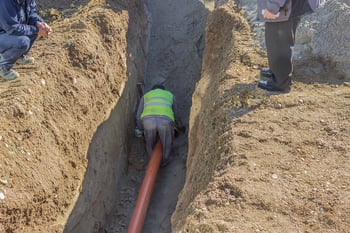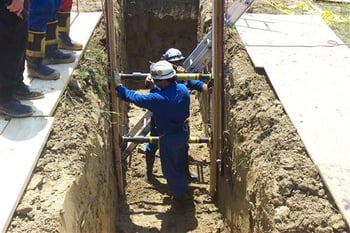NEW YORK – Two employees of a Bronx water and sewer line construction contractor were fatally injured in a trench at a construction site at John F. Kennedy International Airport in Queens on April 3, 2023. These fatalities could have been prevented if their employer had ensured proper safeguards, a federal investigation found.
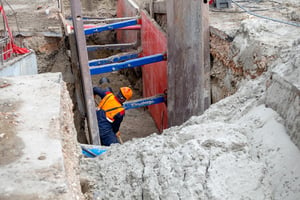 The two employees were attempting to remove soil from below a concrete slab located within a trench when the slab broke apart and collapsed, fatally crushing both workers. OSHA inspectors found that the company failed to:
The two employees were attempting to remove soil from below a concrete slab located within a trench when the slab broke apart and collapsed, fatally crushing both workers. OSHA inspectors found that the company failed to:
- Support the concrete slab, exposing both employees to the danger of a collapse.
- Instruct employees on safe methods to remove the slab and provide supervision to ensure those methods were followed.
- Construct the excavation's protective system based on designs in accordance with OSHA standards.
“Working in excavations is inherently dangerous. Demolition of existing structures must be carefully planned, and shoring systems must be built according to their design. Employers are obligated to make a good faith effort to recognize, evaluate and control workplace hazards throughout the course of the work and as conditions change,” said Kevin Sullivan, OSHA's Long Island and Queens area director.
“Diligent oversite and management of changing worksite conditions could have helped prevent this tragedy from happening.”
Learn more about OSHA and protecting workers against trenching and excavation hazards.

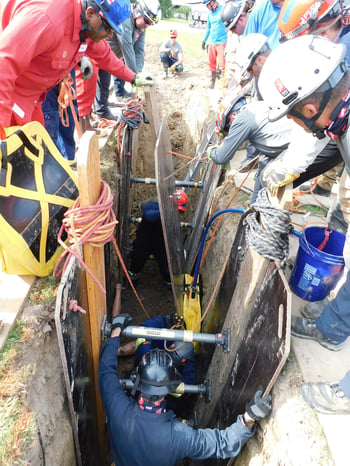
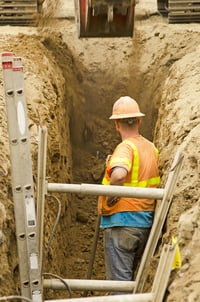 “A trench collapse can bury workers under thousands of pounds of soil and rocks in seconds, making escape and survival often impossible,” explained OSHA Regional Administrator Bill Donovan in Chicago. “With proper training and use of required safety procedures, incidents like these can be prevented. OSHA and industry employers are working hard to raise awareness of hazards and protective measures and educate employers on how they must protect workers.”
“A trench collapse can bury workers under thousands of pounds of soil and rocks in seconds, making escape and survival often impossible,” explained OSHA Regional Administrator Bill Donovan in Chicago. “With proper training and use of required safety procedures, incidents like these can be prevented. OSHA and industry employers are working hard to raise awareness of hazards and protective measures and educate employers on how they must protect workers.”